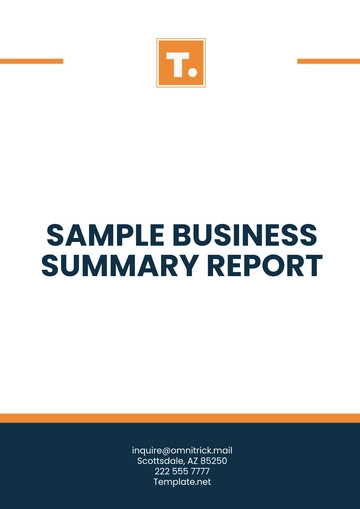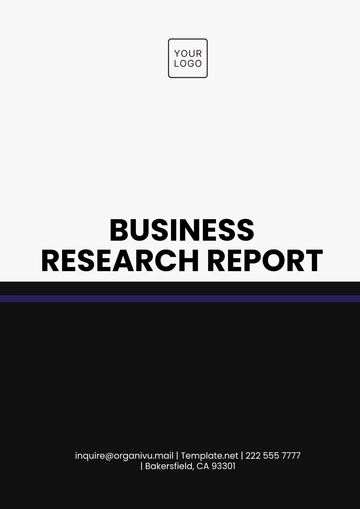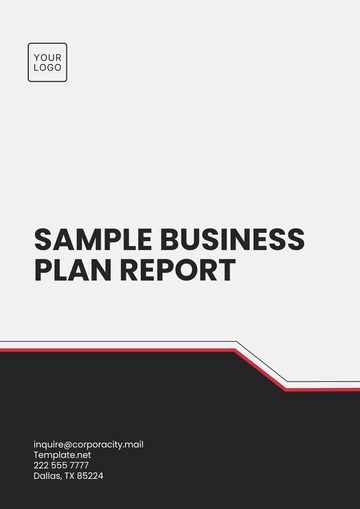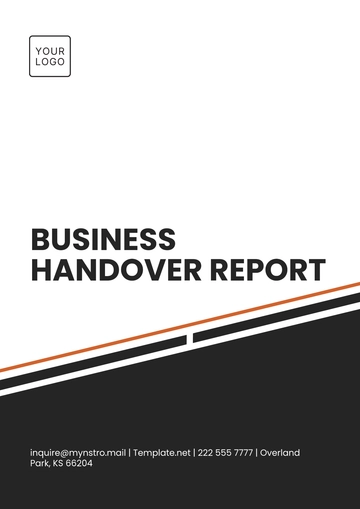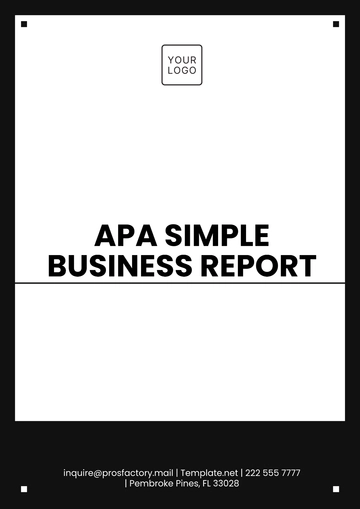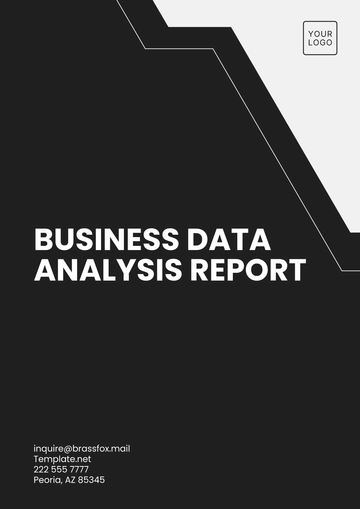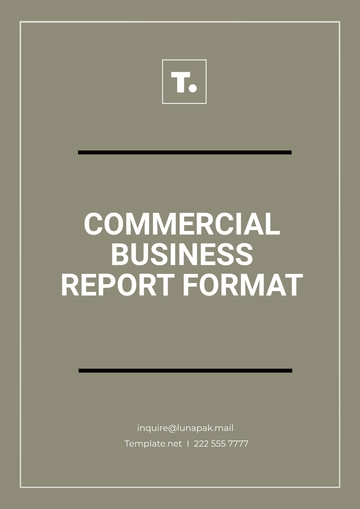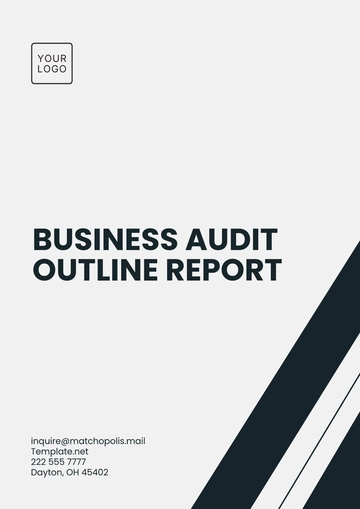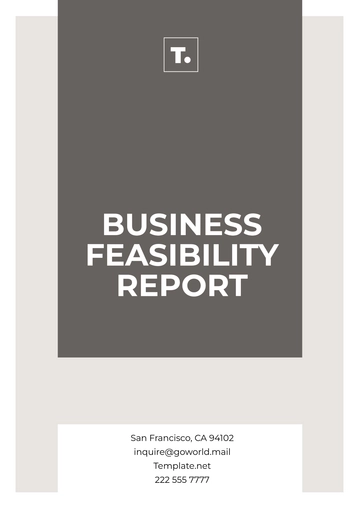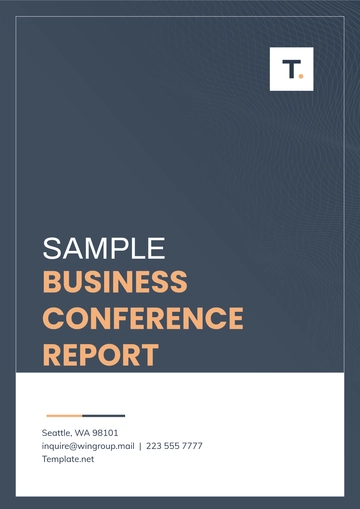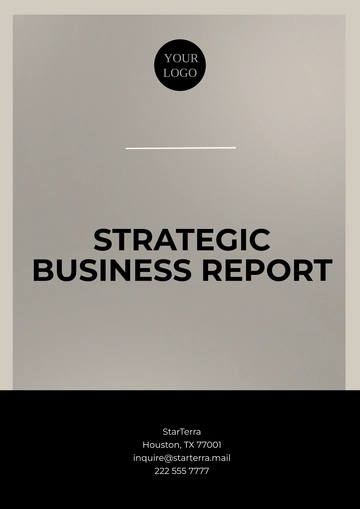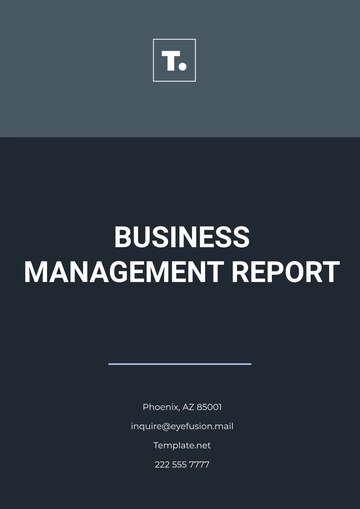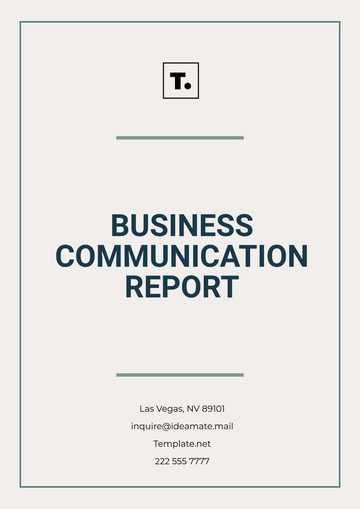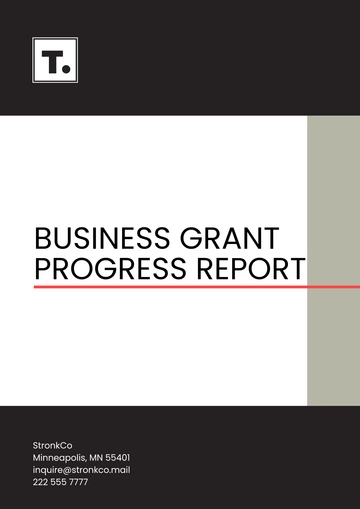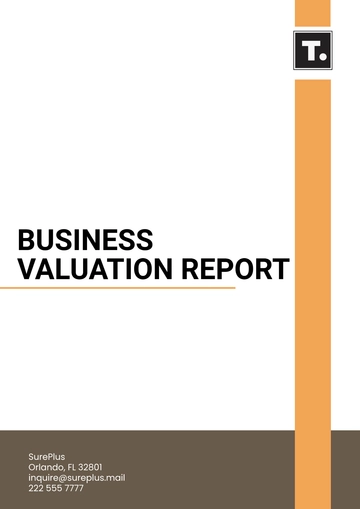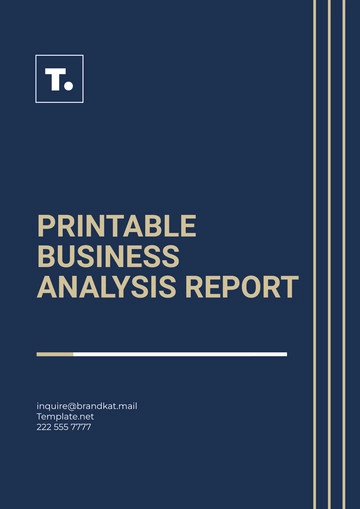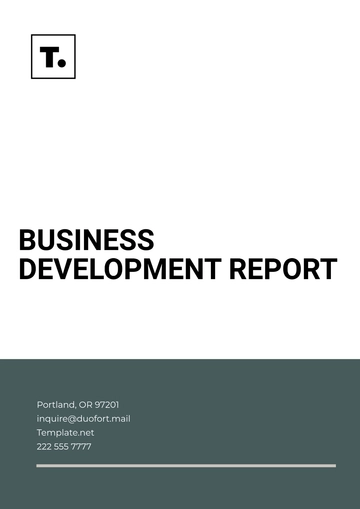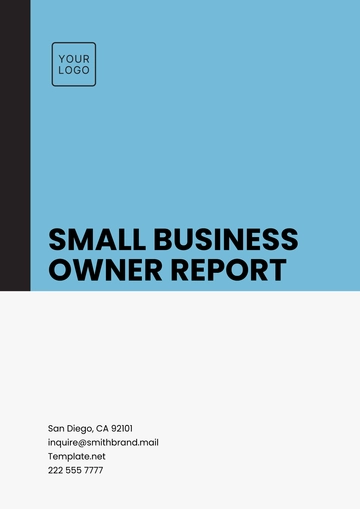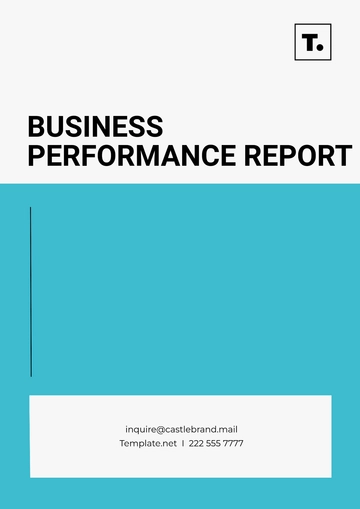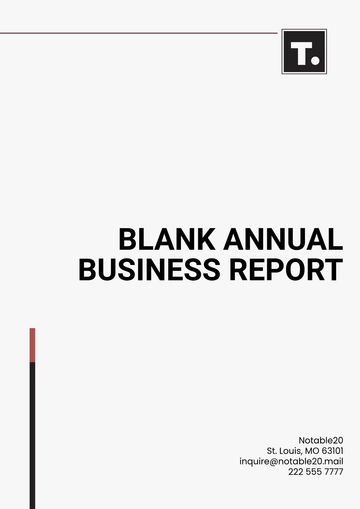Free Grocery Store Profit and Loss Report

I. Executive Summary
[Your Company Name] has experienced a dynamic fiscal period, marked by both robust growth and strategic adjustments. The recent Profit and Loss Report highlights significant progress in revenue generation, driven by a strategic expansion of product lines and enhanced marketing efforts. Total revenues increased by [12]% compared to the previous period, reflecting a successful implementation of promotional campaigns and a strong response to seasonal product offerings. Our cost of goods sold (COGS) has also been managed efficiently, showing a slight increase of [5]% which is aligned with the revenue growth and inflationary pressures on supply chain costs.
Operating expenses have been carefully controlled, with administrative and overhead costs rising by only [3]%. This careful management has resulted in an improved operating margin and a [7]% increase in net profit before taxes. The company's focus on streamlining operations and investing in technology upgrades has contributed to these positive outcomes. Overall, [Your Company Name] is positioned strongly in the market, demonstrating resilience and adaptability in a competitive landscape, while maintaining a commitment to delivering value to our customers and stakeholders.
II. Revenue Analysis
The revenue analysis for [Your Company Name] in the first half of the year reveals a robust performance across various income streams. Total revenue has reached $550,000, driven by notable contributions from in-store sales, online transactions, and additional revenue sources such as delivery and membership fees. In-store sales amounted to $350,000, while online sales contributed $150,000. Additional revenue, including delivery fees and membership charges, added another $50,000, highlighting a diversified approach to income generation.
Comparing this to the previous year's revenue of $400,000, the current year shows a substantial growth rate of 37.5%. This increase underscores the effectiveness of strategic initiatives and market adaptations, reinforcing [Your Company Name]’s position in the industry and showcasing our successful efforts in expanding our revenue streams.
Total Revenue
In the first half of the year, the grocery store generated significant revenue from multiple sources which include:
In-store sales
Online sales
Additional revenue streams (e.g., delivery fees, membership fees)
Revenue Growth
Comparison of revenue growth compared to the previous year:
Year | H1 Revenue ($) | Growth Rate (%) |
|---|---|---|
Previous Year | 400,000 | - |
Current Year | 550,000 | 37.5% |
III. Expense Analysis
In the first half of the year, [Your Company Name]'s expense analysis reveals a strategic focus on managing operational costs while adapting to market conditions. The total expenses for the period were allocated across key categories, including the cost of goods sold (COGS), operational expenses, and marketing and advertising. The COGS amounted to $250,000, reflecting an increase of 10% from the previous year due to rising raw material prices. This rise underscores the challenges faced in maintaining profitability amid inflationary pressures on supply chains.
Operational expenses totaled $120,000, with a modest increase of 5% compared to the prior year. This rise is primarily attributed to higher salaries and utility costs, which are essential for sustaining store operations and supporting staff. Despite these increases, the overall expense growth has been managed effectively, demonstrating a commitment to cost control and operational efficiency.
Marketing and advertising expenses remained consistent at $30,000, highlighting a strategic focus on maintaining cost-effective promotional activities. This approach has allowed [Your Company Name] to continue driving brand awareness and customer engagement without significantly increasing marketing expenditures. Overall, while there have been notable increases in specific expense categories, the company's ability to manage these costs effectively and maintain a balanced approach to spending reinforces its commitment to operational excellence and financial stability.
Total Expenses
The key expense categories for the grocery store during H1 include:
Cost of Goods Sold (COGS)
Operational expenses (salaries, utilities, rent)
Marketing and Advertising
Expense Trends
Analysis of changes in key expense categories compared to the previous year:
COGS: Increased by 10% due to rising prices of raw materials.
Operational Expenses: Slight increase of 5%, mainly from increased salary and utility expenses.
Marketing and Advertising: Maintained at the previous year's level to focus on cost-effective strategies.
IV. Profit and Loss Statement
The Profit and Loss Statement for [Your Company Name] in the first half of the year reflects a solid financial performance. With total revenue reaching $550,000 and total expenses amounting to $400,000, the grocery store has successfully generated a net income of $150,000. This result underscores the effectiveness of the company's revenue generation strategies and expense management.
The achieved net income highlights a healthy profit margin, demonstrating [Your Company Name]'s ability to balance growth and cost control. This performance not only indicates financial stability but also positions the company favorably for continued success and investment opportunities in the future.
Net Income
Based on the revenues and expenses, the net income for H1 is calculated as follows:
Description | Amount ($) |
|---|---|
Total Revenue | 550,000 |
Total Expenses | 400,000 |
Net Income | 150,000 |
Overall, the grocery store achieved a net income of $150,000 in the first half of the year, representing a healthy profit margin.
V. Recommendations
Based on the comprehensive analysis of the revenue, expenses, and overall financial performance of [Your Company Name], several key recommendations are proposed to sustain and further enhance profitability. The focus of these recommendations is on strategic growth, cost management, and optimizing marketing effectiveness.
Continue to grow online sales to diversify revenue streams.
Implement cost-saving measures in operational expenses.
Optimize marketing strategies for a higher return on investment (ROI).
VI. Conclusion
[Your Company Name] has demonstrated strong financial performance in the first half of the year, marked by notable revenue growth and effective expense management. The revenue increase to $550,000, driven by in-store, online sales, and additional revenue streams, highlights the company’s successful implementation of strategic initiatives and market adaptations. Despite a 10% rise in the cost of goods sold and a modest increase in operational expenses, the company has managed to maintain a healthy profit margin, achieving a net income of $150,000. This outcome reflects a balanced approach to growth and cost control.
Moving forward, the focus should be on capitalizing on the successful online sales expansion, while implementing measures to further reduce operational costs. Additionally, refining marketing strategies to maximize return on investment will be crucial for sustaining growth and enhancing profitability. By adhering to these recommendations, [Your Company Name] is well-positioned to continue its positive trajectory and strengthen its market position. The results of this period not only validate the company’s strategic choices but also lay a solid foundation for future financial success and operational excellence.
- 100% Customizable, free editor
- Access 1 Million+ Templates, photo’s & graphics
- Download or share as a template
- Click and replace photos, graphics, text, backgrounds
- Resize, crop, AI write & more
- Access advanced editor
Evaluate your store’s financial health with the Grocery Store Profit and Loss Report Template from Template.net. This fully editable and customizable template provides a clear format for tracking revenues, expenses, and net profit. Easily personalize it using our Ai Editor Tool to create a professional report that offers valuable insights into your grocery store's financial performance.
You may also like
- Sales Report
- Daily Report
- Project Report
- Business Report
- Weekly Report
- Incident Report
- Annual Report
- Report Layout
- Report Design
- Progress Report
- Marketing Report
- Company Report
- Monthly Report
- Audit Report
- Status Report
- School Report
- Reports Hr
- Management Report
- Project Status Report
- Handover Report
- Health And Safety Report
- Restaurant Report
- Construction Report
- Research Report
- Evaluation Report
- Investigation Report
- Employee Report
- Advertising Report
- Weekly Status Report
- Project Management Report
- Finance Report
- Service Report
- Technical Report
- Meeting Report
- Quarterly Report
- Inspection Report
- Medical Report
- Test Report
- Summary Report
- Inventory Report
- Valuation Report
- Operations Report
- Payroll Report
- Training Report
- Job Report
- Case Report
- Performance Report
- Board Report
- Internal Audit Report
- Student Report
- Monthly Management Report
- Small Business Report
- Accident Report
- Call Center Report
- Activity Report
- IT and Software Report
- Internship Report
- Visit Report
- Product Report
- Book Report
- Property Report
- Recruitment Report
- University Report
- Event Report
- SEO Report
- Conference Report
- Narrative Report
- Nursing Home Report
- Preschool Report
- Call Report
- Customer Report
- Employee Incident Report
- Accomplishment Report
- Social Media Report
- Work From Home Report
- Security Report
- Damage Report
- Quality Report
- Internal Report
- Nurse Report
- Real Estate Report
- Hotel Report
- Equipment Report
- Credit Report
- Field Report
- Non Profit Report
- Maintenance Report
- News Report
- Survey Report
- Executive Report
- Law Firm Report
- Advertising Agency Report
- Interior Design Report
- Travel Agency Report
- Stock Report
- Salon Report
- Bug Report
- Workplace Report
- Action Report
- Investor Report
- Cleaning Services Report
- Consulting Report
- Freelancer Report
- Site Visit Report
- Trip Report
- Classroom Observation Report
- Vehicle Report
- Final Report
- Software Report

